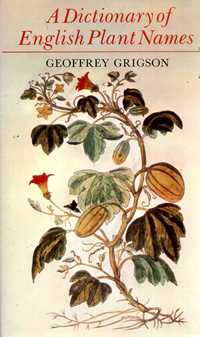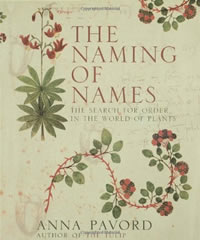An easy to use database for discovering and viewing the complete taxonomy of any given plant or animal in a hierarchical format.
Keyword: Botanical nomenclature
International Plant Names Index
“The International Plant Names Index (IPNI) is a database of the names and associated basic bibliographical details of all seed plants. Its goal is to eliminate the need for repeated reference to primary sources for basic bibliographic information about plant names. The data are freely available and are gradually being standardized and checked.”
Gymnosperm Database
“The Database provides basic information on the classification, description, ecology and uses for all species and higher-ranked taxa of the gymnosperms, i.e., conifers, cycads, and their allies. You enter the taxonomic tree at the Family level and then navigate to the Genus, Species or sometimes Variety levels. At each level, information on the taxon at hand is provided, along with bibliographic citations that will take you to more detailed information about the taxon.”
A Dictionary of English Plant Names

You may never have wondered about the etymology of vernacular names for plants, but Geoffrey Grigson, author of A Dictionary of English Plant Names (Allen Lane, 1974), has. Why exactly is ‘henbane’ (Hyoscyamus niger) the bane of hens, aside from the fact that it is toxic? It might be because the plant thrives on disturbed or hen-scratched earth, where hens would be more likely to find and consume its poisonous seeds (which will either stun or kill them). [There is a more recent interpretation suggesting that the ancient root hen meant death, but the meaning was lost, and relating the name to domestic fowl filled in the knowledge gap. Source: An Analytic Dictionary of English Etymology by Anatoly Liberman, University of Minnesota, 2008]
The folk history of traditional English plant names is colorful and captivating. ‘Brank-ursine’ is a 15th century name meaning bear’s claw, describing the shape of an Acanthus mollis flower. One common name for Sedum telephium is ‘Midsummer Men,’ originating in a loves-me-loves-me-not game of the 17th century in which cook-maids and dairy-maids placed pairs of stems in chinks in the wall and waited to see if they inclined toward or away from each other. Every time I consult this book I learn something new and fascinating.
Systematic Botany
Peer reviewed research.
Taxonomic Literature, 2nd edition (TL-2)
The online, fully searchable version of this important and historic work documenting plant taxonomy.
The Naming of Names
 Anna Pavord’s The Naming of Names sets the groundwork for the system of nomenclature we use so freely today. More than just names, this book chronicles the development of human understanding of plants, how they live and propagate, but most importantly how we’ve come to identify and categorized them.
Anna Pavord’s The Naming of Names sets the groundwork for the system of nomenclature we use so freely today. More than just names, this book chronicles the development of human understanding of plants, how they live and propagate, but most importantly how we’ve come to identify and categorized them.
While beginning in the classical period, the core of this story is set in the revival of science during the Renaissance, from about 1400 – 1700. Pavord treats her human subjects as protagonists in a story of the development of the science of botany, and while supported with excellent scholarship, the writing is also very passionate.
The last hero of her narrative is the English scholar and plantsman John Ray (1627-1705), who she credits with the invention of the discipline of taxonomy. “No fireworks, no claps of thunder, no swelling symphonic themes mark Ray’s achievement. It is a quiet, lonely, dogged consummation, and, in its insistence on the importance of method before system, critical in shaping future thinking on the subject to which he had devoted the whole of his adult life.”
Excerpted from the Spring 2012 Arboretum Bulletin.